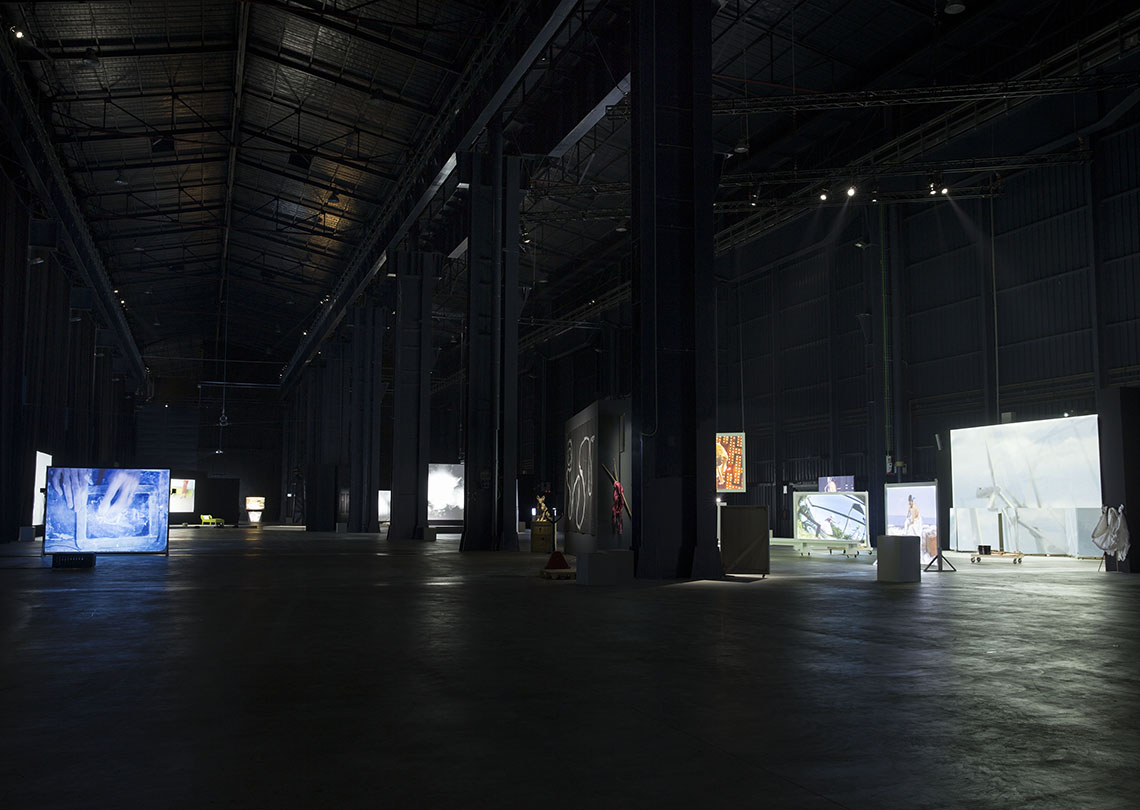
Joan Jonas Light Time Tales
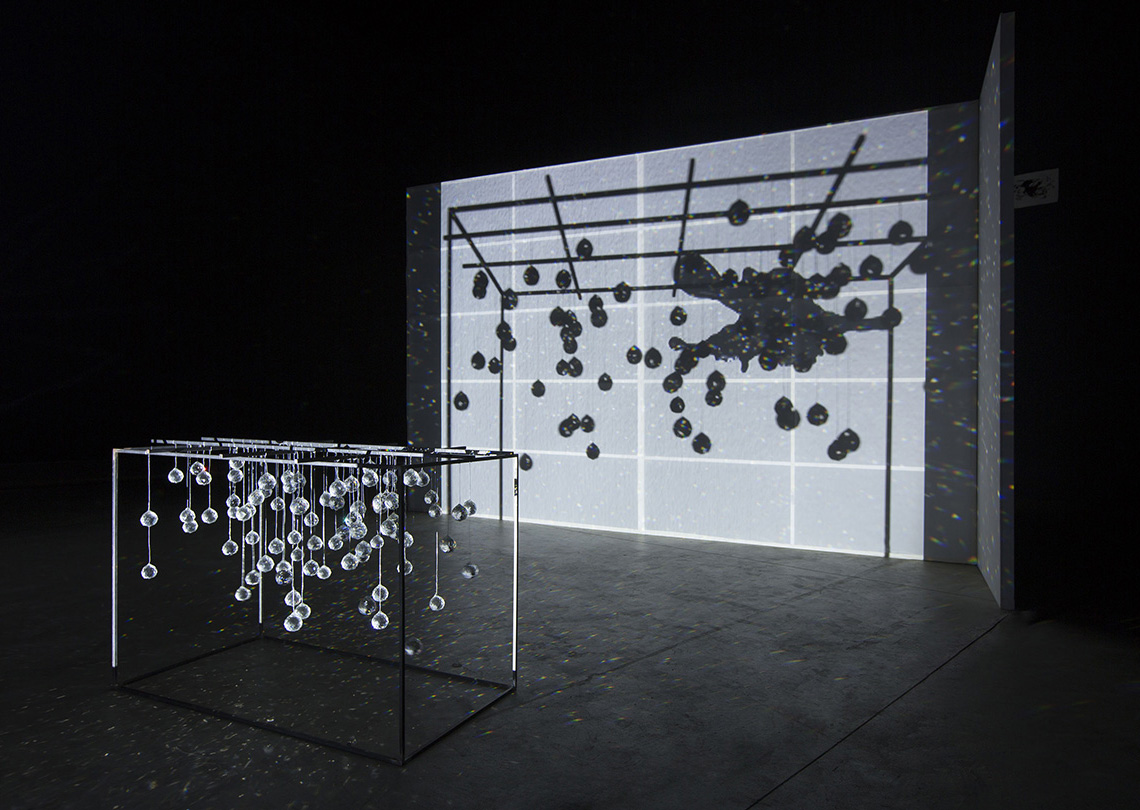
Visiting Joan Jonas’s ‘anthological exhibition’ (as opposed to plain ‘retrospective’) Light Time Tales at HangarBicocca is like a stroll through a memory palace. The industrial space is indeed palatial: vast enough to hold Anselm Kiefer’s permanent installation The Seven Heavenly Palaces (2004) with its unwieldy modular towers made of reinforced concrete, rising to a height of 18 meters. And the twenty works that make up the exhibition, mostly single-channel videos and installations built around moving image projections, starting with some of the earliest black-and-white 16mm films Jonas made – Wind (1968) and Paul Revere (1971) – and spanning the length of her career, must have felt like a trip down the memory lane to the artist.
Jonas said words to that effect in the Q & A that followed the press preview, at which a couple of visitors could be seen walking their dogs (on a leash), appropriately enough given how prominently animals, and especially those of the canine variety, feature in the show. Beautiful Dog (2014), Jonas’s most recent work to have been included in this filmic anthology or archive, one of the first that greets the visitor upon entering the main open space of the exhibition, shows her dog Ozu – named after and in tribute to the Japanese filmmaker – running around a beach on Cape Breton in Nova Scotia, Canada, where Jonas has been going on summer holidays since the 1970s and where many of her films have been shot. The video was made using three different cameras, including a GoPro fastened to Ozu’s collar, in an attempt to show the world from a dog’s perspective.
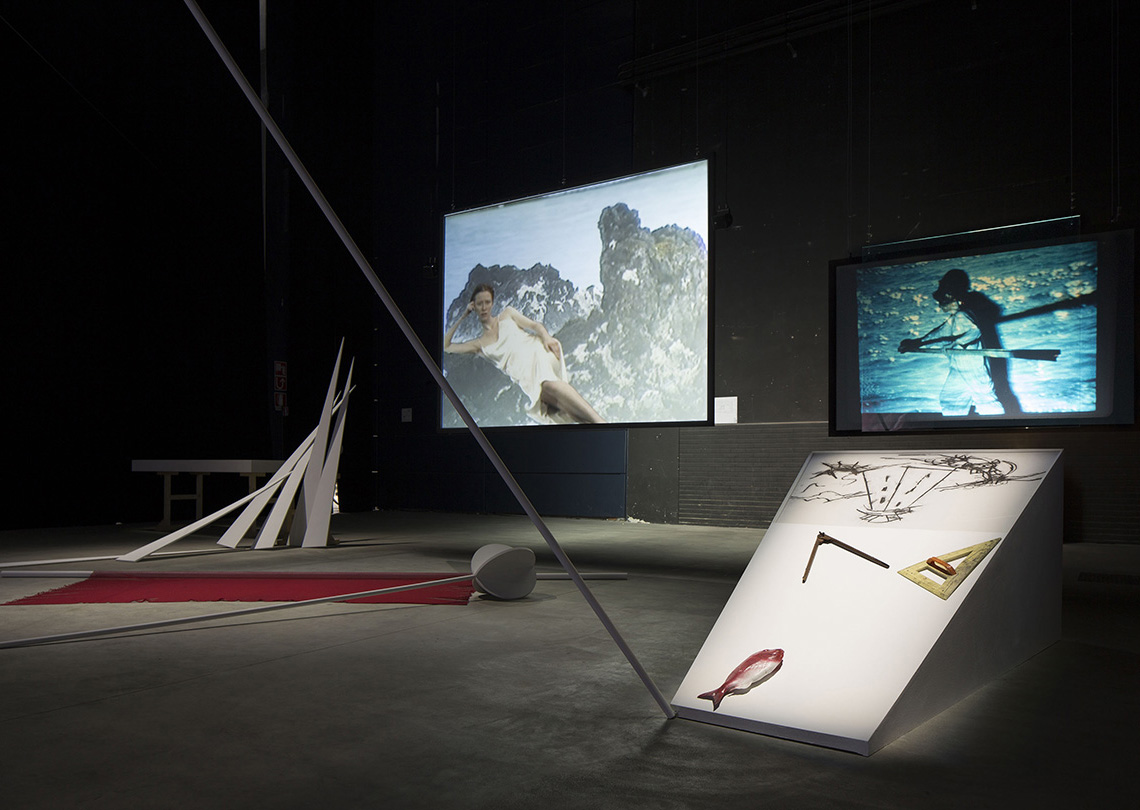
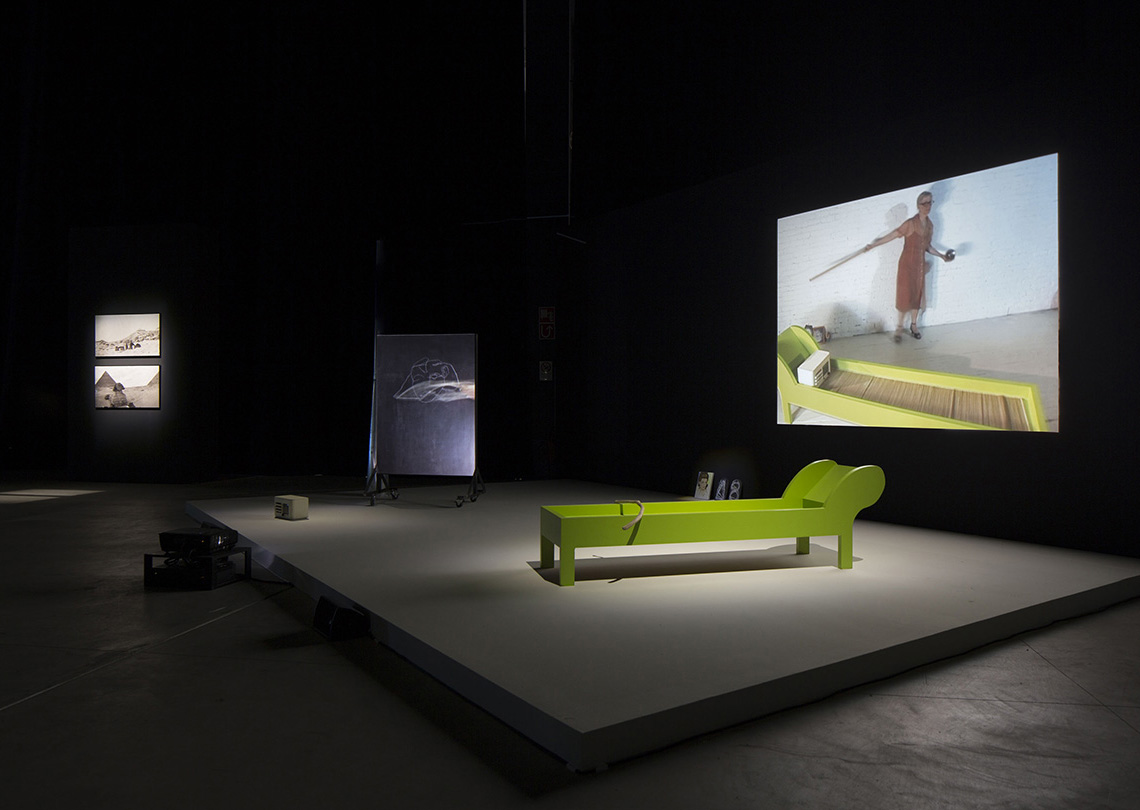
Andrea Lissoni, who curated the show, encouraged Jonas to privilege the animal theme that threads through Light Time Tales. ‘In all fairytales, there’s an animal that’s helping,’ Jonas noted in the Q & A. Another one of her dogs, the white husky Zina, keeps the lone female figure company in the video Melancholia (2005), which is part of The Shape, The Scent, The Feel of Things (2004/2007) installation. The two seem to hover, their image superimposed using the chroma key technique over that of a snowy field. Zina also appears besides her elfin mistress, sometimes masked and bearing flags, mirrors and other signature props, in a magical wooded landscape filmed on Cape Breton in Waltz (2003), placed at the start of a show that deliberately eschews a chronological and linear presentation.
Instead, the artist and the curator chose to convey through the very layout of the exhibition the recurrent motifs and the cyclical nature of Jonas’s preoccupations. The rotatory parcours that the overall display and the individual installations invite is perhaps most apparent at the outset, as one crosses the curtained threshold and walks into the spectacularly dark L-shaped space to find video works presented on different supports all around the room, as if expanding a circle of elongated cones fashioned out of photographic paper, which were used as musical instruments and to amplify sound in performances such as Mirage (1976), standing in the middle of the room. Double Lunar Rabbits (2010) with its twin concave projection screens made of Japanese paper and wood likewise foregrounds the doubling effects prevalent in Jonas’s work.
‘Someone said that […] these are games of survival, time-fillers, and that development is cyclic, circular, and that you always return to the beginning,’ the artist muses, in voice over, at the end of the 1976 video I Want to Live in the Country (and Other Romances). Circular forms and movements obsessively return in ‘Light Time Tales’, painted with a broom over a street pavement or in the guise of the kimono-clad artist doing a cartwheel, played in slow-motion, in Songdelay (1973); as a metal band or hula hoop propped up against one of the projection screens or as rotating wind turbine blades in The Shape…; taking the form of a double-circle or Celtic knot pattern drawn in white chalk over a black surface in the installation Lines in the Sand (2002).
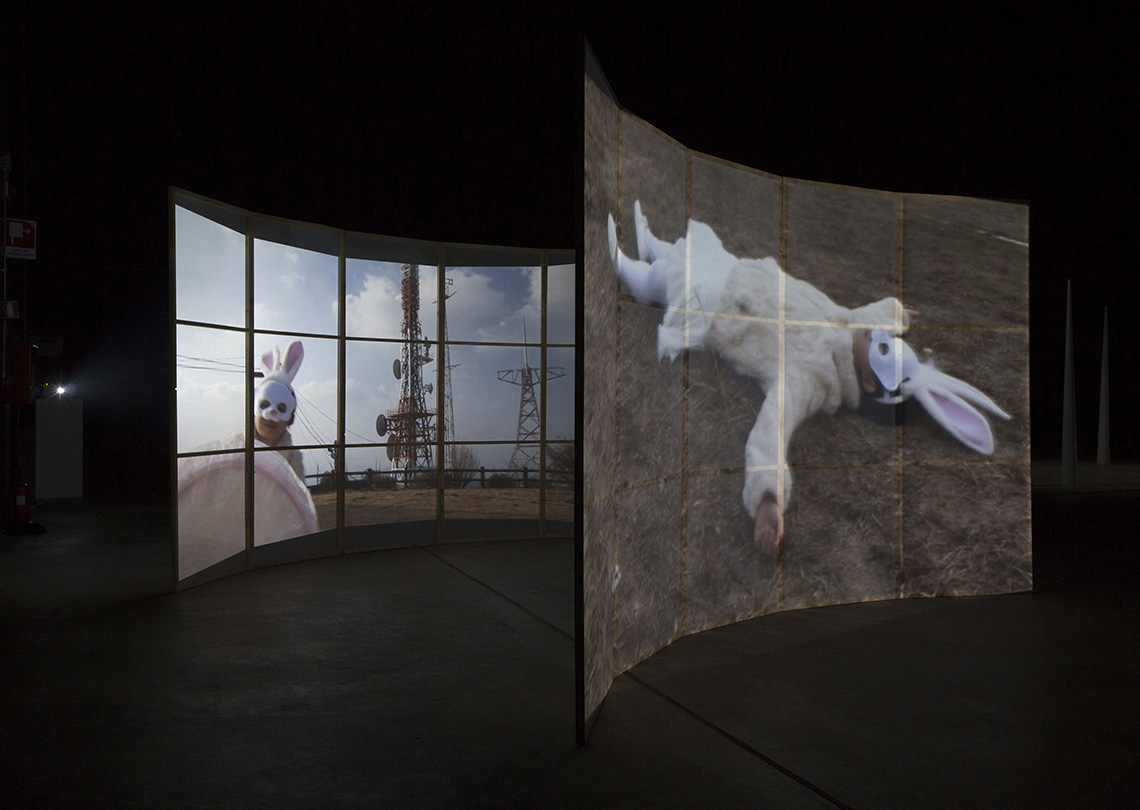
For Jonas, the circle and the line are the basic elements of drawing, which underpins her work as a multimedia artist in the same way as sculpture does. (Jonas trained in drawing and sculpture, before making her breakthrough as a performance artist.) Though she is always looking for new ways of drawing, from the delicate Zen-like lines in the sand in the work bearing that title to the black ink traces drawn on the snow in Reanimation (2010/2012/2013), one type of drawing to which she frequently reverts is made with white chalk over a blackboard – a potent image of the memory theatre lodged in our head. The elementary support and means are coupled with more complex technology in densely layered performances like Reanimation, which will be restaged at HangarBicocca on 21 October. The blue-tinged Street Scene With Chalk (1976/2008/2010) overlays a scene from Jonas’s Reading Dante performance of 1976 with a close-up of the artist’s ringed hand continually drawing, erasing and redrawing lines or circular patterns; screened simultaneously, the two form a palimpsest of sorts.
As one drifts through the cavernous space, meandering one’s way from one constellation of moving images and objects to another, what impresses is the sheer variety of presentation, the stark contrasts between the simple monitors and screens used to project the early black-and-white videos, which repay every minute one gives them, and the more elaborate, more colourful multimedia installations furnished with sundry props, sculptural objects and remnants of past performances that occasionally crop up in the video works shown alongside them. One unusual, particularly alluring viewing format is illustrated by the two pieces in the My New Theatre series on view. Reminiscent of dioramas, the compact installation consists of a monitor embedded inside a long conical structure resting on wooden trestles, in front of which a small bench has been placed, making for a miniature portable theatre.
Showing the works in a completely open space – leaving aside Reanimation, which has a room to itself at the close of the exhibition – posed an exciting challenge for Jonas, who is used to exhibiting in neatly partitioned white-cube spaces. Simply moving from one work to another, seeing them from afar, brought to the fore certain thematic and formal crossovers that had not been very obvious to her before. But the discrete moving image works dotted around the black box of HangarBicocca’s main exhibition hall overlapped in a physical sense as well, when a projection or the sounds from a neighbouring piece entered their space, for example. The haunting melody of Waltz, on which Jonas collaborated with the late Robert Ashley, could be heard from one end of the room to the other, returning with the insistence of a half-forgotten, half-remembered air, circular and vertigo-inducing like the dance itself.

Joan Jonas
Light Time Tales
HangarBicocca, Milan
2 October – 2 February
Images: courtesy HangarBicocca, Milan
A DUTCH TRANSLATION OF THIS TEXT WAS PUBLISHED IN METROPOLIS M No 6-2014/2015 INVISIBLE & THE CURATED SELF
Agnieszka Gratza


